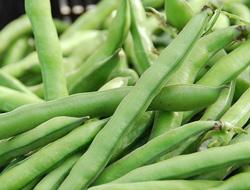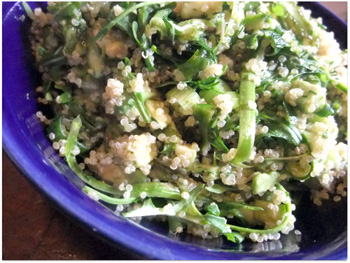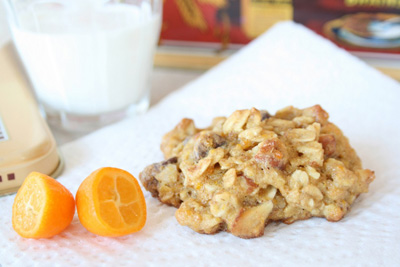 Finally, the wait is over! Fava beans are in season. They appeared for the first time last Sunday, and I couldn't be happier. I know how hard the wait has been on you too, but you can rest easy now. Well don't rest too easily. Fava beans have a depressingly short season--usually just 4-5 weeks in April-May.
Finally, the wait is over! Fava beans are in season. They appeared for the first time last Sunday, and I couldn't be happier. I know how hard the wait has been on you too, but you can rest easy now. Well don't rest too easily. Fava beans have a depressingly short season--usually just 4-5 weeks in April-May.
Fava (FAH vah) beans, like artichokes, asparagus, and English peas are a hallmark of spring time produce. These meaty, chewy legumes are exceptionally flavorful; they're similar in taste to edamame and have the firm texture of lima/butter beans. In general, the larger the pod, the better the bean. So when you see them, buy them, even if they're $3.00-4.00/pound. You won't be disappointed.
And don't worry about what to call them. According to Wiki and Cook's Thesaurus, you're correct if you say Vicia faba, broad bean, butter bean, faba bean, English bean, field bean, horse bean, tic bean, or Winsdor bean. I'm not making this up. I think someone actually wrote a dissertation entitled "The Many Appellations of the Bean, Fava."
So call 'em whatever you want, just don't miss them. And follow these instructions for shelling. They take a little effort because you have to shell them twice, but trust me, they're worth it.

 I think most people who shop at farmers’ markets are willing to pay a little more for produce because it’s fresher. There are certain items, however, that are notorious for causing people to balk, such as passionfruit, figs, and, currently, cherries.
I think most people who shop at farmers’ markets are willing to pay a little more for produce because it’s fresher. There are certain items, however, that are notorious for causing people to balk, such as passionfruit, figs, and, currently, cherries. Ah, Spring! We are enjoying a warm spell right now and the fresh produce reflects the change of seasons with earthy root vegetables giving way to tender bright greens. I am so happy to have sunshine and bright green asparagus to eat!
Ah, Spring! We are enjoying a warm spell right now and the fresh produce reflects the change of seasons with earthy root vegetables giving way to tender bright greens. I am so happy to have sunshine and bright green asparagus to eat! How can anyone resist tart and tiny kumquats, sitting so cute and bright in the produce department at the grocery store? They just look happy. I buy them every year as soon as they make their first seasonal appearance. I never have a plan for them when I set them in my basket, but it doesn’t matter. I buy the organic kumquats, rinse them well and, after I’ve cut the stem ends off, I pop them into my mouth one after the other, as if they were orange jelly beans.
How can anyone resist tart and tiny kumquats, sitting so cute and bright in the produce department at the grocery store? They just look happy. I buy them every year as soon as they make their first seasonal appearance. I never have a plan for them when I set them in my basket, but it doesn’t matter. I buy the organic kumquats, rinse them well and, after I’ve cut the stem ends off, I pop them into my mouth one after the other, as if they were orange jelly beans. The second coolest thing about Swiss chard is that it cooks so darn fast. (The first coolest thing being its amazing neon color—especially the Bright Lights and Rainbow varieties.) So I hate to spoil the party, but I’m going to. My recipe takes a bit longer than the standard sauté.
The second coolest thing about Swiss chard is that it cooks so darn fast. (The first coolest thing being its amazing neon color—especially the Bright Lights and Rainbow varieties.) So I hate to spoil the party, but I’m going to. My recipe takes a bit longer than the standard sauté.
